Conserving Hippeastrum lara-ricoi, endemic to the Yungas dry forests of Bolivia
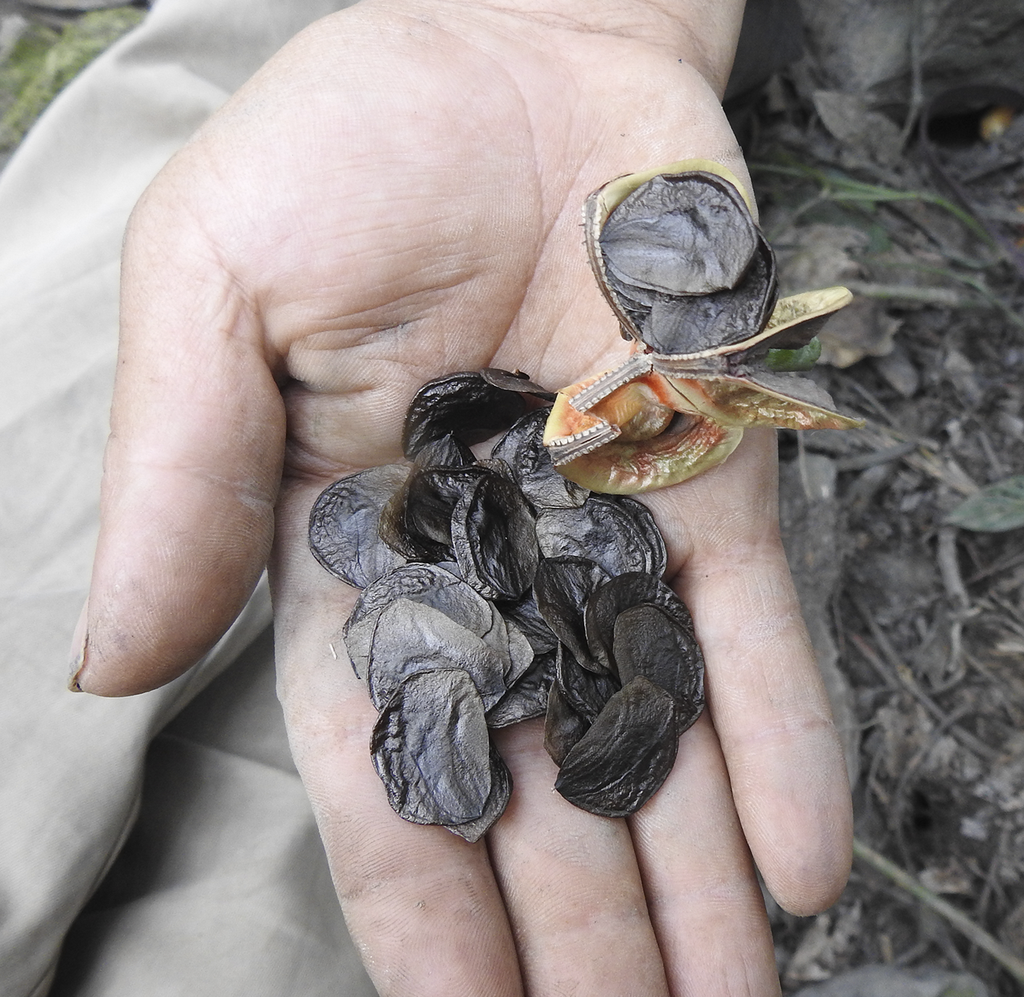
-
Status of project
Completed -
Region
Latin America and the Caribbean -
Country
Bolivia -
Programme
BGCI -
Workstream
Saving Plants -
Topic
Plant Conservation
Funded by the Global Botanic Garden Fund
Project Completed: 2023
Institution: Herbario Nacional de Bolivia
Conservation status of Hippeastrum lara-ricoi, endemic to the Yungas dry forests of Bolivia
In recent years, many new species of Hippeastrum (Amaryllidaceae) have been described in the Neotropics and centers of diversity in the Bolivian Andes, with 34 species and 23 endemism’s (Lara Rico et al. 2021). A new species has recently been described for Bolivia (Moya et al. 2022), in the Yungas dry forests. This species is only known from the type collection, so it is of great interest and is the focus of this project.
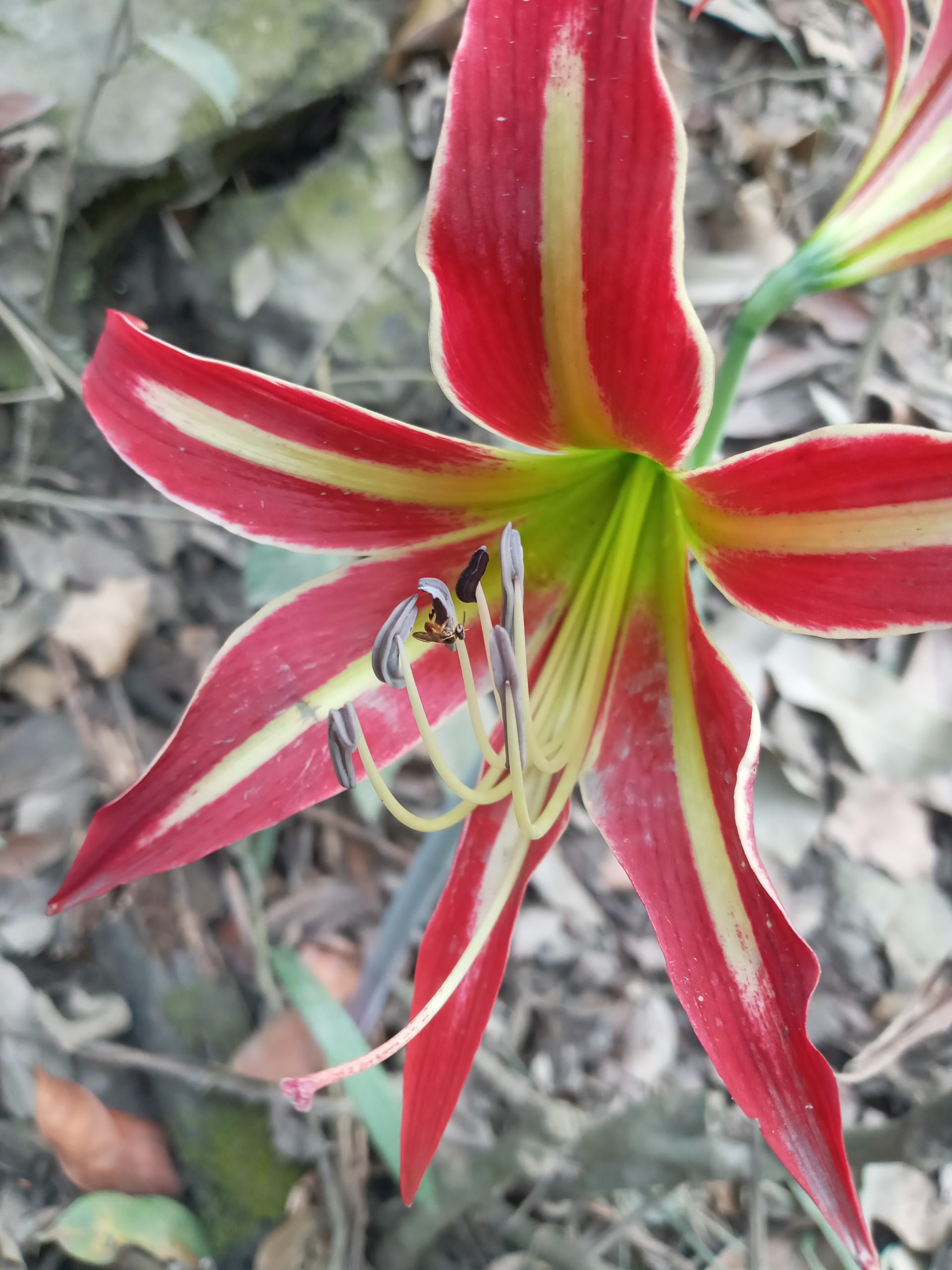
63 sites have been visited in the municipalities of Asunta, Apolo, and Chulumani, in the department of La Paz. H. lara-ricoi was only identified in the Chamaca valley, along with four potential populations. Its conservation status shows a very low extent of occurrence and occupancy area (less than 2 km2). The population of H. lara-ricoi is currently highly restricted, facing recent pressures from rural expansion (land use change), which suggests categorizing it as Critically Endangered (CR).
A total of 6 bulbs of H. lara-ricoi have been transplanted from the Chamaca area to the nursery established at the National Herbarium of Bolivia. A total of 393 seeds of Hippeastrum have been collected in the field (from 5 individuals), of which 42% are viable. For germination tests, five different substrates were used and a control sample (soil from the study area). There are three collected specimens from the study area and 79 seeds of H. lara-ricoi that have been deposited in the National Herbarium of Bolivia. Additionally, 53 seedlings were deposited in the nursery.
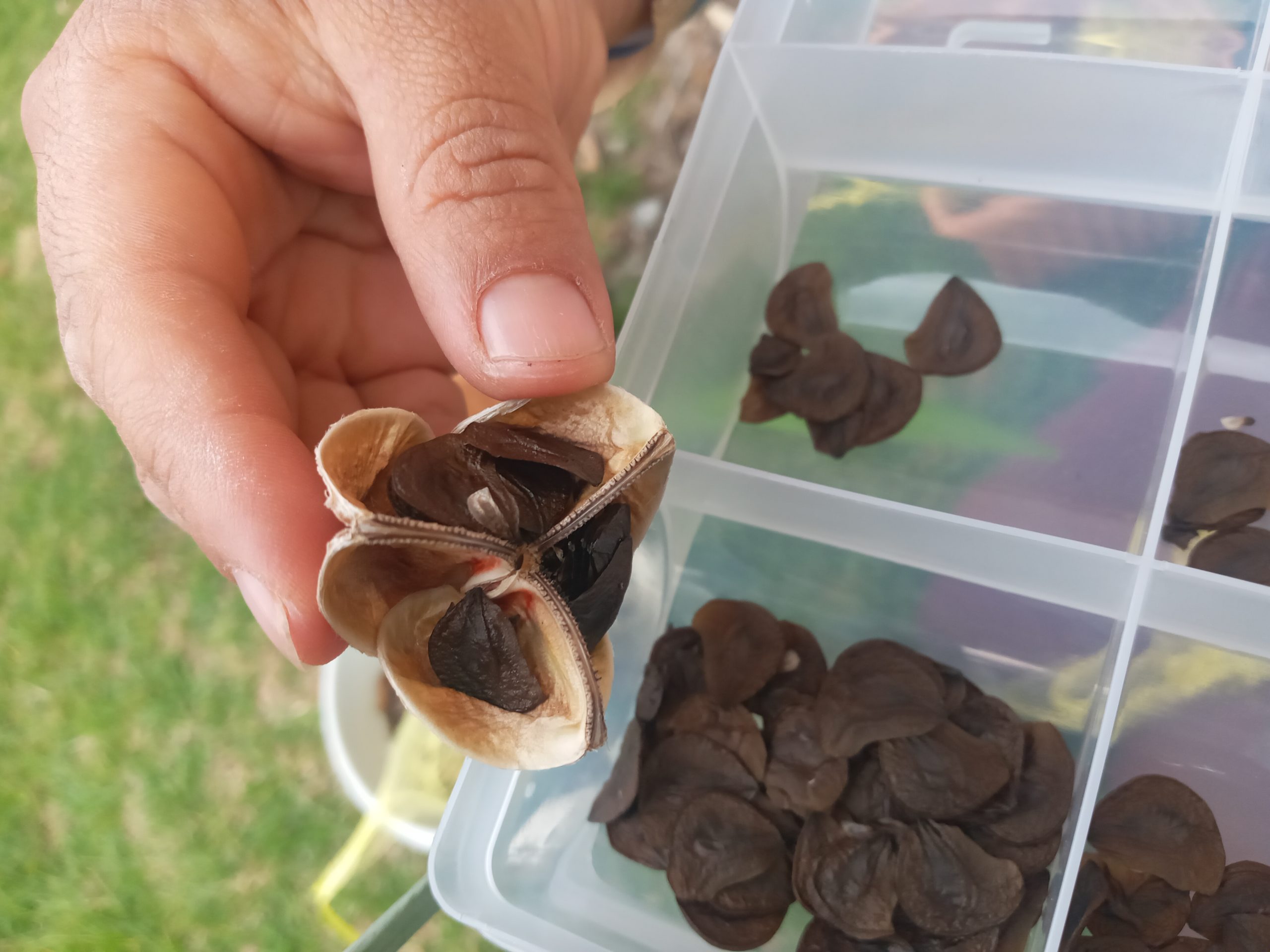
A total of 86 seeds have been planted in 5 types of substrate and in soil from the study area: 5 seeds in substrate A (1 soil from the study area, 1 peat). 1 seed (control sample) in substrate B (soil from the study area). 15 seeds in substrate C (1 sand, 2 compost, 1 peat, 1/2 Yungas soil). 15 seeds in substrate D (6 peat, 3 sand, 1 black soil). 5 seeds in substrate E (1 soil from the surrounding area of the Botanical Garden, 1 fertilizer).45 seeds in substrate F (1 sand, 3 compost, 3 peat).
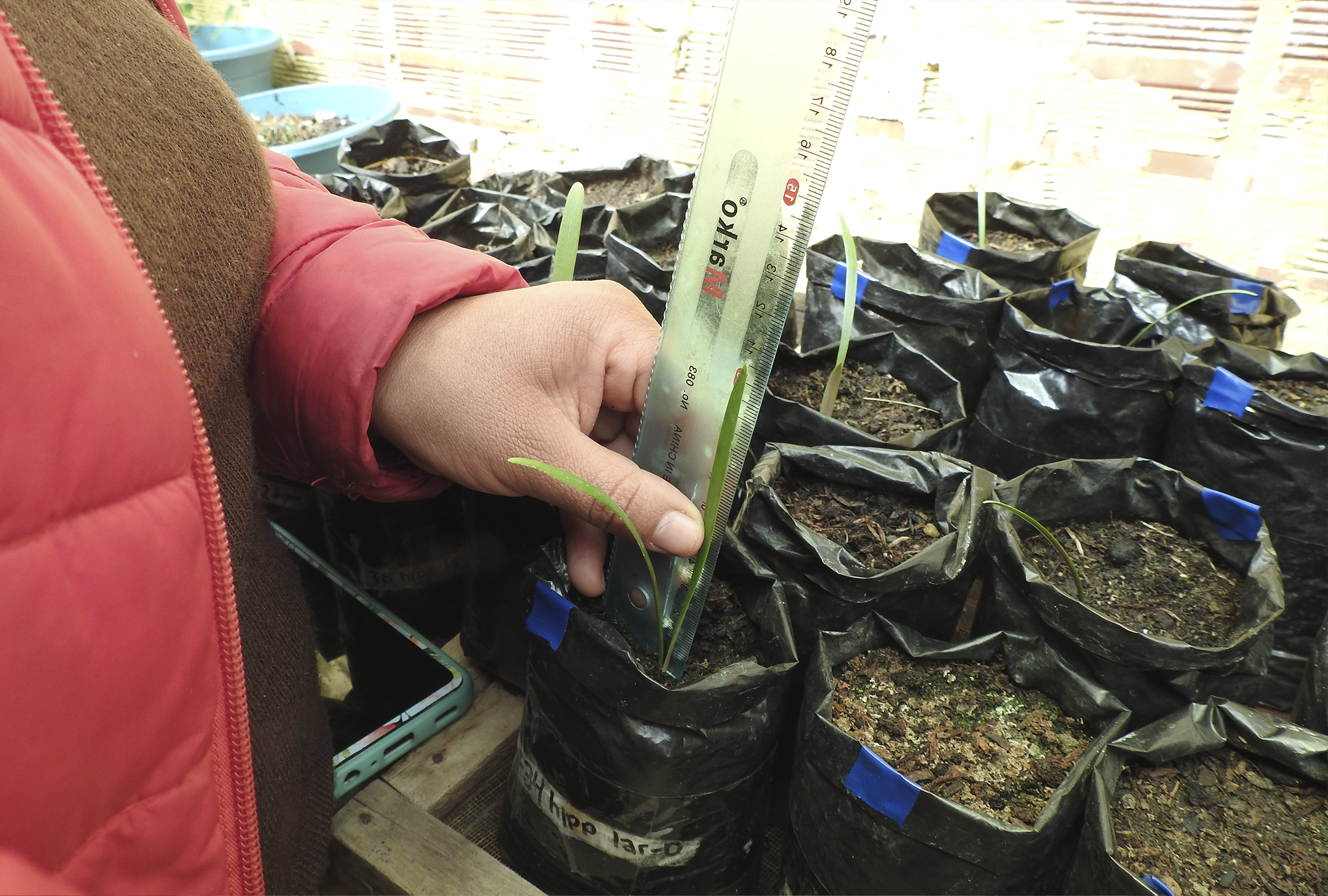
Phenology development of cultivated bulbs could not be determined, but data was obtained in the field. In July 2022, individuals were found in 4 growth stages (scape development, flowers, immature capsules, and seeds). In July 2023, around 40% of individuals had buds and flowers in different stages. The monitoring of some flowering individuals (14 individuals with flowers) until the immature fruit stage took approximately 19 days, 37 days to immature capsules, and 57 days in total for mature fruit with capsule explosion for seed dispersal (between July and September). Additionally, 4 individuals did not reach the mature fruit stage.
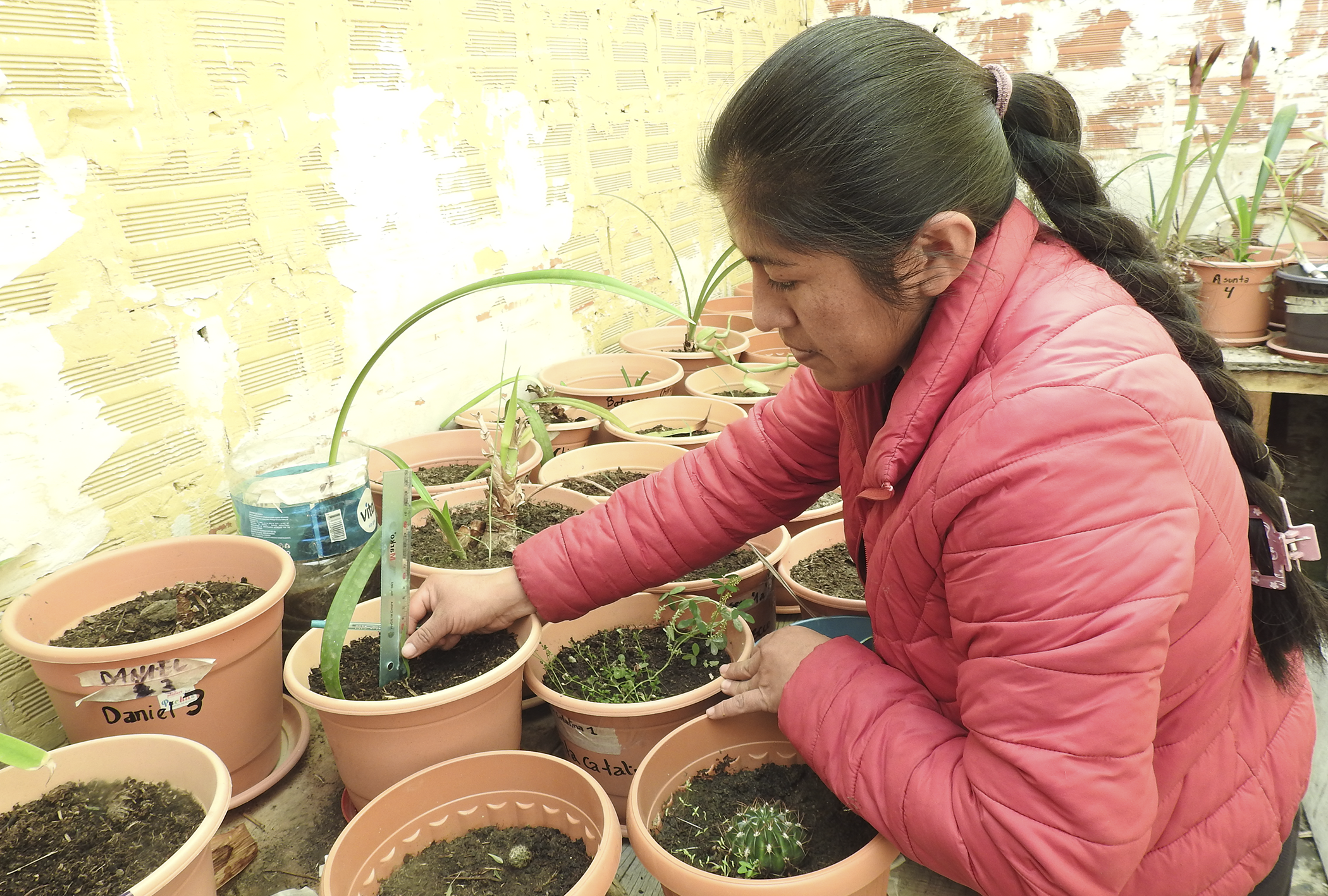
Germination results:
- Substrate A was irregular with 100% success, 80% survival rate, irregular growth from 3 to 19.6 cm over a year with an average monthly growth of 1.9 cm ± 1.74, max=5.1 and min=0.6.
- Substrate B showed irregular germination with 100% success, 100% survival rate, irregular growth from 8.1 to 10.5 cm over a year with an average monthly growth of 2 cm ± 0.53, max=2.7 and min=1.5.
- Substrate C no individuals germinated.
- Substrate D showed 60% germination and survival rate, irregular growth from 0.5 to 25.6 cm over 10 months with an average monthly growth of 2 cm ± 1.40, max=6.8 and min=0.5.
- Substrate E only had one germinated individual with no survival.
- Substrate F showed 87% germination and survival rate, irregular growth from 1.5 to 13.5 cm over 3 months with an average monthly growth of 4.2 cm ± 2.10, max=11.1 and min=1.2.